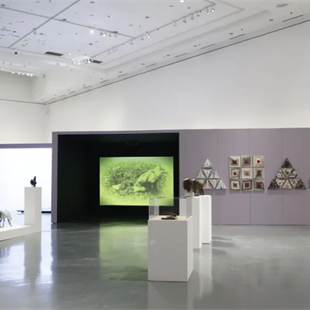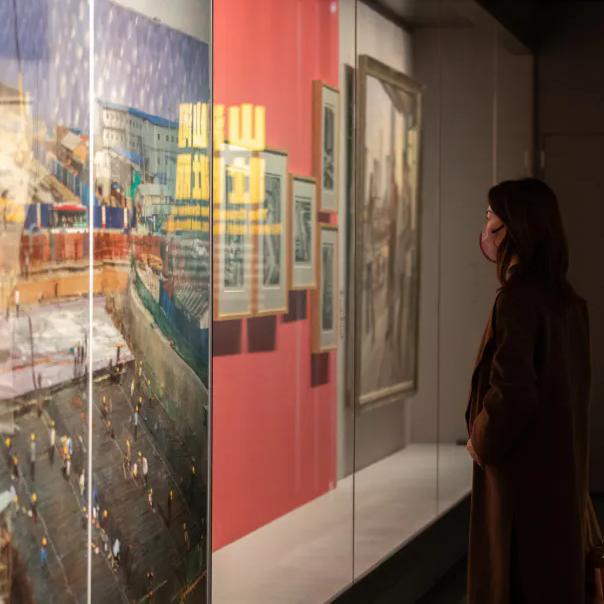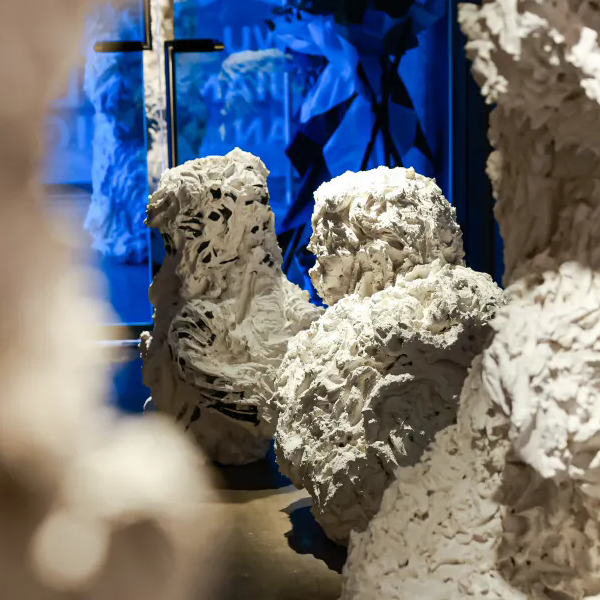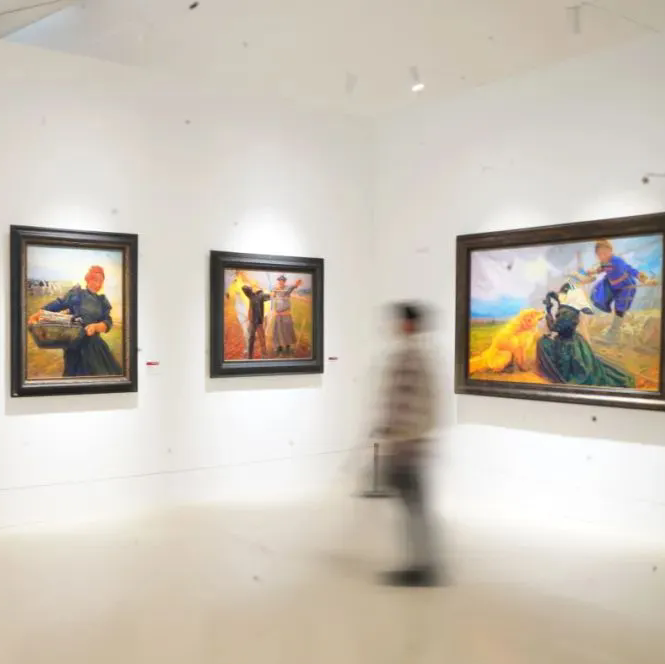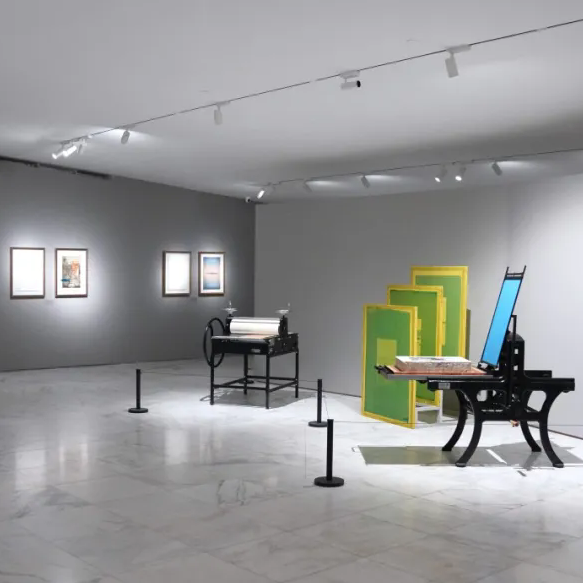
It’s paradoxical that as the world becomes increasingly ‘civilized’, technologically advanced and media savvy, global culture increasingly veers towards the inane. DAFT showcases examples of ‘idiot tendencies’ in contemporary art and asks what our fascination with infantile humor, disgusting behavior and irrationality says about our world today. Popular culture is rife with extreme forays into the ridiculous, from the Jack Ass movie trilogy, to exhibitionist game shows, to reality television and the pervasiveness of pornography. These lowbrow mediums often corrupt social behavior, and the fiction that they portray inadvertently warps our reality. Yet, it seems this is only half the story. Daily observations and outrageous news reports testify that today’s society is increasingly absurd, and that our fiction and reality often mirror one another.
Contemporary artists around the world have reflected this condition by celebrating, critiquing and utilizing sophomoric attributes in their work. Many of the pieces presented in this exhibition refute any pretense that we live in a ‘civilized’ society. Instead these works posit critiques of contemporary culture and our often nonsensical human state. Other works offer a glimpse at raw, human expression, unfettered by the intellect, social mores and civil conditioning reminding us that beneath the layers of our own façade that we are corporeal animals excitable by simple prodding.
Curatorial Statement for group exhibition of dAfT:
It is a taleMacbeth Act 5, scene 5, 19–28 ShakespeareTold by an idiot, full of sound and fury,
Signifying nothing.
It’s paradoxical that as the world becomes increasingly ‘civilized’, technologically advanced and media savvy, global culture progressively veers towards the inane. dAfT showcases examples of ‘idiot tendencies’ in contemporary art and asks what our fascination with infantile humor, disgusting behavior and irrationality says about our world today. Popular culture is rife with extreme forays into the ridiculous, from the Jack Ass movie trilogy, to exhibitionist game shows, to reality television and the pervasiveness of pornography. These lowbrow mediums often corrupt our social behavior, and inadvertently warp our reality. Yet this is only half the story. Daily observations and outrageous news reports testify that today’s society is increasingly absurd, and that our fiction and reality mirror one another.
One of the earliest artists to address how ludicrous things have gotten was the American, Paul McCarthy. This exhibition is greatly inspired by his work and living legacy. From onset of his career, McCarthy incorporated sophomoric strategies in his work to cast a critical eye on our current cultural situation, and his spirit has influenced subsequent generations of artists worldwide. Presented in dAfT are some of Paul’s earliest black and white videos, which document simple performances that took place in a basement during the early 1970s. In this selection of thirteen videos the artist is shown employing his naked body, body parts, and body fluids in conceptual exercises. These early pieces show the nascent development of the themes that mark McCarthy’s mature work- his use of raw physicality mixed with a unique performance personae and flair for humor. McCarthy’s influence is clearly seen, albeit re-formulated for our schizophrenic, neon-colored, globalized world, in the work of the thirty year old art star Ryan Trecartin. Trecartin’s video works have dazzled audiences worldwide with their camp theatrics and psychedelic montages that seem to harness the psyche of our online era. In his video installation, K-CoreaINC.K (Section A), which satirizes corporate culture, exaggerated stereotypes of the everyday office worker act in bizarre yet recognizable ways that subvert our expectations of the business world.

Decisive Swine(Series: works with no series); photography ARTIST: Lin Zhipeng

B-076(Series: Overspread); painting, 3340x2170mm ARTIST: MadeIn
More poetic and lighthearted is Hu Xiangqian’s Two Men which envisions the eternally separated red and green traffic lights as two figures in red and green polka dot suits. In Hu’s video these personified lights come down and celebrate their union by dancing together in the middle of an intersection. This lyrical expression of friendship also manifests a fleeting, traffic jam daydream into reality. Just as Hu turns an accepted reality on its head Li Mu’s Happy Birthday re-imagines the birthday party as a demented ritual. In this video a celebratory event turns manic and primal, as a girl wearing a frilly dress is continually pummeled by birthday cakes until she and her surroundings are buried in a sugary explosion.
Many of the pieces presented in dAfT refute the pretense that we live in a civilized society, and instead posit critiques of contemporary culture and our often nonsensical human condition. At the same time they also challenge the nature of art’s high cultural status by incorporating explicit lowbrow sensibilities and elements as tools to examine our global psyche. Hollywood films, cable television, gossip news, online voyeurism, and politics as theatre all serve as inspiration as well as critical targets for many of these artists. The collective MadeIn Company, directed by the artist Xu Zhen, takes the large corporation as a cue for its own structure. For this exhibition they stitched together an array of kitsch fabrics onto canvas to render a large chimpanzee surrounded by eclectic political imagery. This mixed media work, which combines inspiration from both the European tradition of tapestry as well as the children’s TV series Sesame Street, calls into question not only just how far man has actually evolved but the contested nature of history. Ma Daha’s two channel video podium History Channel-Back to Basics also plays on the evolutionary myth of man. In this video diptych primal man is dumbfounded when he encounters fire for the first time in a montage of Hollywood film explosion scenes. This work asks us to reconcile the global acceptance of Darwin’s theories with the ubiquity of gratuitous violence in popular media. Olaf Bruening is another artist who often employs offhand references to popular culture as a way to expose the pervasive boredom that exists in a society over saturated by mass media. The photographs presented here record a series of simple interventions that the artist has made into the conundrum of daily life using available models and materials. A human covered in spaghetti mimics a long haired dog, or a girl with her hair braided to resemble a helicopter show that art need not be complicated or sophisticated in order to be poignant.

Cock and Spider-Girl(Series: works with no series) ARTIST: Lin Zhipeng

Ho Fatso(Series: works with no series) installation, Interactive Installation ARTIST: Ho Rania
Performance, as either a critical or behavioral research tool, also figures into the works of several other artists in this show. Much of the supporting evidence that we as a society are growing more ridiculous is not only found in our products but more importantly our actions. In Rania Ho’s Ho Fatso, the artist takes on the couch potato culture of gluttony by making a game of our ever expanding, super sized species. In this modified sports ring the audience is invited to wear and play in inflatable fat suits. Mika Rottenberg’s installation and performance work also employs exaggerated bodies to make a point about certain global phenomena. This NY based artist refutes the abstracted notion of globalized manufacturing by placing overly obese, extremely thin or unnaturally muscular figures in cramped and perfunctory assembly line settings. In these photographic records the artist creates a visual analogy of the boredom and extremes endured in order to support our often superfluous international economy. Lin Zhipeng’s light, humorous and often sexual photos are candid documents of his friends either at play or performing for the camera. The cavalier youth pictured in these intimate snapshots is evidence of a growing sense of apathy and discontent with social convention. This sentiment is carried on in the video sculpture work Bitchy, by Zhou Xiaohu. Here the artist expresses the explosive anxiety lying beneath the surface of a generic, middle class reality. Protruding from an ordinary sink’s drain is a floating image of a person cursing the viewer who would otherwise be there to wash his face. Like Zhou and Ho’s work Marc Lafia’s work is also incomplete without audience involvement. In Art as Invention, Lafia transplanted a summer school program he ran for kids in Brooklyn to the gallery. By having participants make or perform it, the project explores the nature of art. Instructions on the wall are departure points for viewers to engage themselves in the creative act. In dAfT the project goes beyond the usual irreverent fun by breaking down the boundaries between studio and exhibition, viewer and object, in order to convey ideas about myth, ritual and body.

(Series: works with no series) painting ARTIST: Dai Qing

Double OK(Series: works with no series) photography ARTIST: Olaf Brenning
Other works in the exhibition offer a glimpse at raw, human expression, unfettered by the intellect, social mores and civil conditioning. These works show a desire to return to the primal- what Picasso might have been looking for in the art of Africa, or an escape from our technologically saturated setting to the infantile haven of basic materials and instinct. In the parade of expressive portraits painted by the artist Dai Qing, a symphony of graphic angst unfolds, whereby characters ranging from beautiful to grotesque grace the walls like an incessant hallucination. Jean Christian Bourcart’s Human After All photographic series also offers a raw look into man’s inner emotional disfiguration. These works, inspired by the continuous stream of news about man’s inhumanity, depict monsters in contorted poses. According to Nietzsche, the artist states, “the man who killed God was the ugliest man in the world because he couldn’t stand being looked at”. Like in the work of Bourcart and Dai Qing, Ouyang Chun also lays his inner psychology bare through an altogether different strategy. Ouyang’s iconography reads more like that of a fairytale than a nightmare. A re-occurring theme in Ouyang’s work- the love and desperation inherent in the artist’s occupation is told in Judgment Day. Here, against an expanse of exuberant rainbow colors a clown-like painter is crucified upon a cross constructed out of the tools of his own trade. Ouyang’s luscious surfaces and talent for visual storytelling gives this work its sophistication and power while another painter in the show demonstrates an almost apathetic relationship with the tradition. Liao Guohe’s often torn, battered or unstretched paintings show that for him the creative act is less a love relationship than one of sadistic dependency. Yet Liao is redeemed by his use of language. His choice of titles or text scratched onto the paintings surface display a deep sense of wit and obtuseness. In A Dirty Bastard Occupies the Sky, a weird muddy blob blocks the infinite vista of the sky replacing any metaphysical connotations that the heavens may inspire with a ridiculous hairball.
Through this survey of diverse practices across the globe, dAfT lets us laugh at ourselves as the human animals that we are, in all our imperfections, convoluted desires, and ridiculous behavior. It also asks where we, as a globalizing culture, may be headed. Without any guiding ideology and a diminishing sense of responsibility the absurd may ultimately overwhelm us. Most of all it reminds us that beneath the layers of our intellect, social mores and civilized façade there are more primal forces at work that govern the human condition.
Artists: Paul McCarthy, Rania Ho, Lin Zhipeng, Li Mu, Ouyang Chun, Olaf Brenning, Ryan Trecartin, Liao Guohe, Made In, Mika Rottenberg, Dai Qing, Ma Da Ha, Zhou Xiaohu, Hu Xiangqian, , Marc Lafia, Jean-Christian Bourcart
Duration: September 7th, 2011 – October 1st, 2011 (11 am – 9 pm, Mon-Sun)
Opening: September 10th, 2011, Saturday, 6 – 8 pm
Location: Shanghai Gallery of Art @ Three on the Bund (3rd Floor, 3 Zhongshan Dong Yi Road Shanghai)
Courtesy of Shanghai Gallery of Art and All Rights Reserved.


